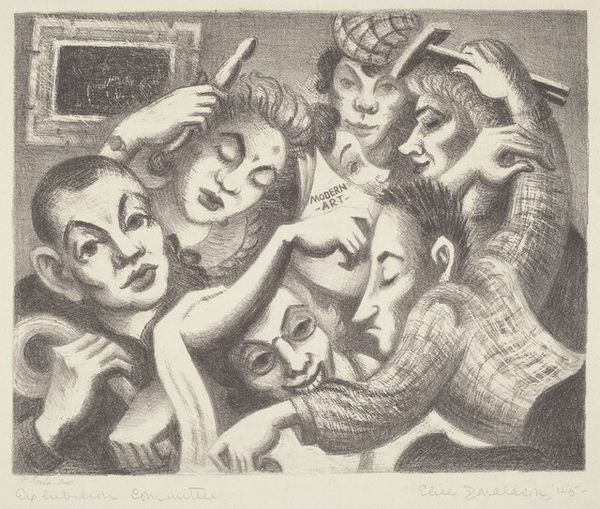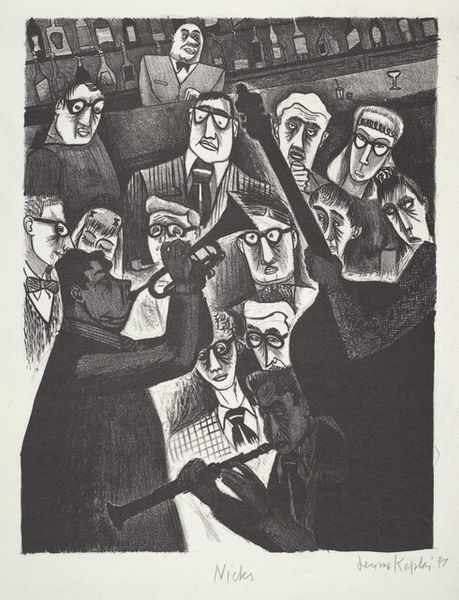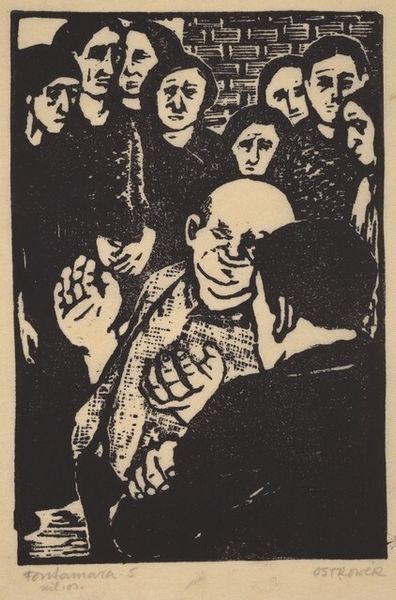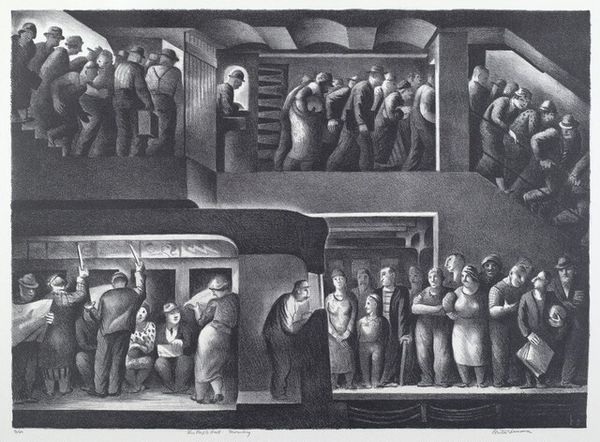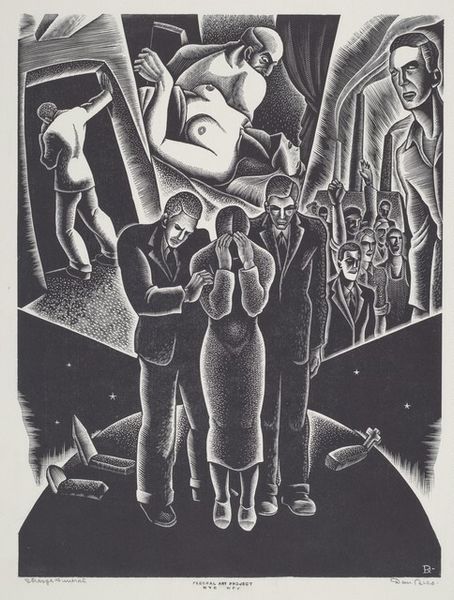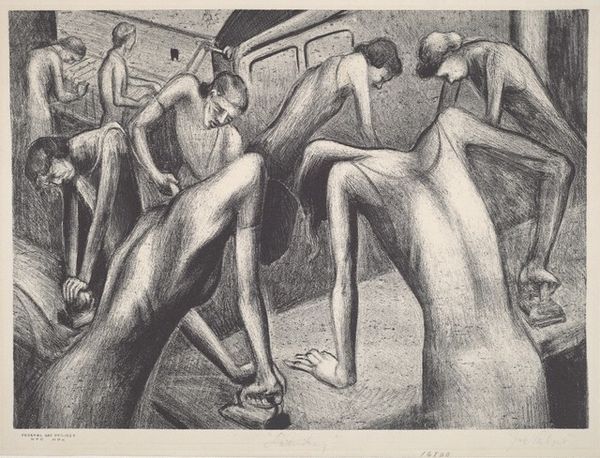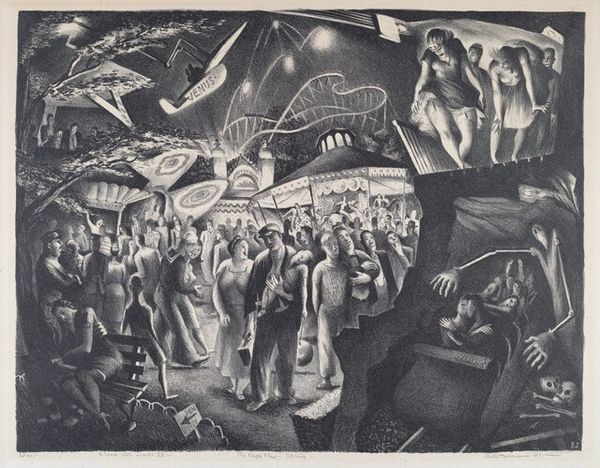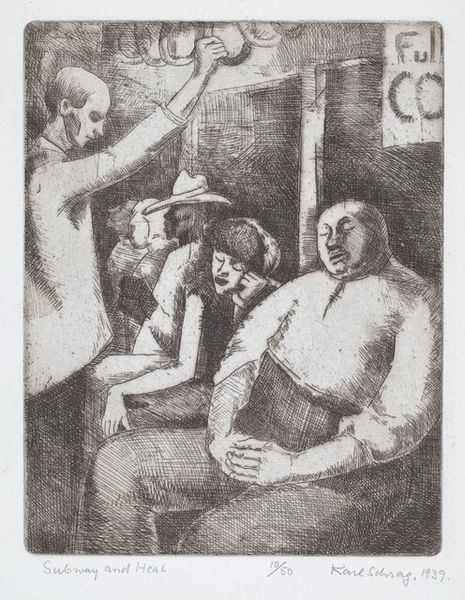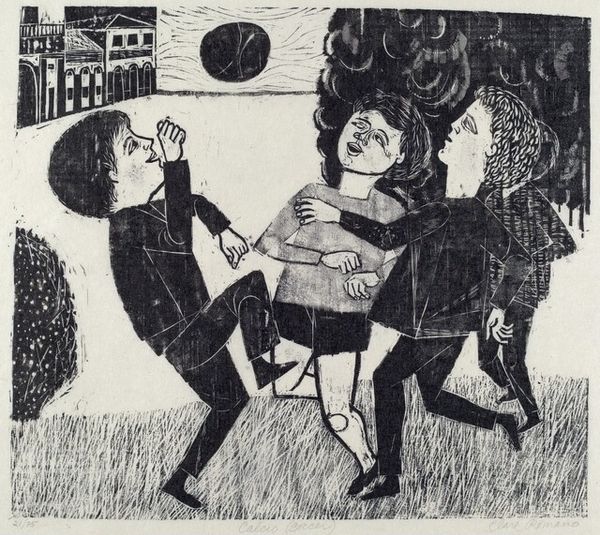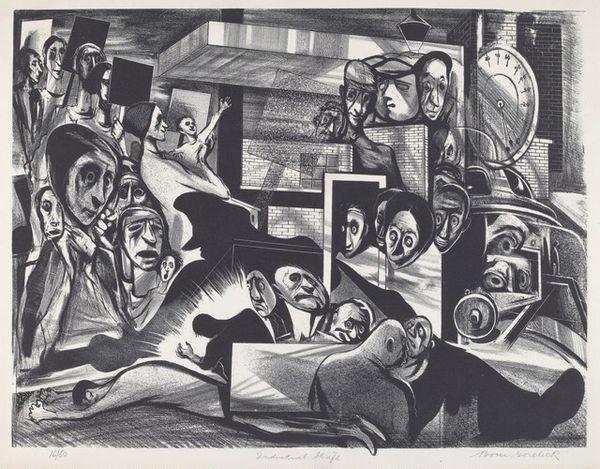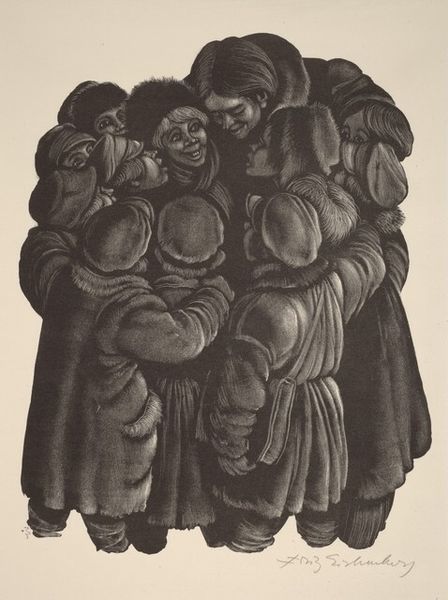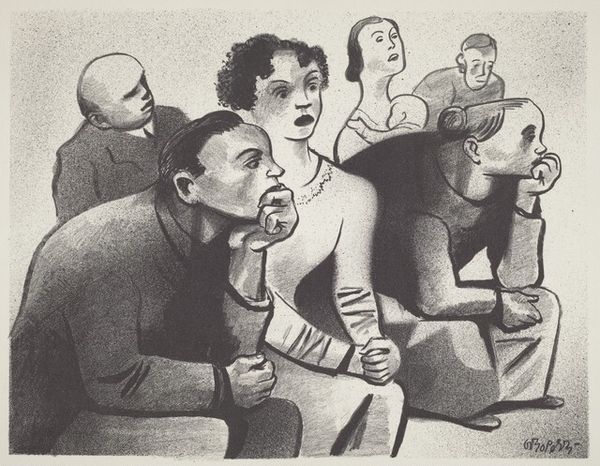
drawing, print, graphite
#
portrait
#
drawing
# print
#
caricature
#
caricature
#
figuration
#
geometric
#
graphite
#
genre-painting
#
modernism
Dimensions: image: 203 x 219 mm sheet: 337 x 337 mm
Copyright: National Gallery of Art: CC0 1.0
Curator: This is Caroline Durieux's "Bipeds Dancing," a graphite print created in 1932. The scene depicts figures on a crowded dance floor, all rendered in her distinct, caricatured style. What strikes you initially about this work? Editor: It’s intensely claustrophobic. Despite being a scene of purported leisure, there's a remarkable sense of unease radiating from these figures. Everyone looks so somber, almost trapped in this formalized movement. Curator: Precisely. Considering Durieux's historical context, it’s compelling to interpret this piece as a commentary on social constraints. The 1930s were fraught with economic instability and increasing anxieties leading up to the Second World War. This image, while appearing lighthearted on the surface, is a potent visual critique of forced social gaiety. Editor: The arched windows behind the dancers—they appear to cage the figures. Are those meant to symbolize the institutional or societal structures of that time? They almost look like bars on a prison window, repeated over and over. Curator: Yes, the repetition emphasizes confinement. It echoes the geometric stylization prevalent in art deco and early modernism but repurposes it to highlight societal pressure. Notice also how few figures meet the viewers gaze. The alienation feels palpable, reflecting widespread disconnection despite physical proximity. Editor: There’s such an interesting clash of visual languages. These almost monstrous visages, pulled from caricature, juxtaposed with the high-society setting. It's such an unsettling contrast. You get this creeping sense that underneath all the artifice, there’s something deeply troubled about this social scene. It reveals a collective disillusionment through a visual vocabulary of grotesqueness. Curator: It serves as a reminder that what seems merely aesthetic can possess deep political resonance. Durieux, through her art, offers us a way of considering the subtle power dynamics embedded in our interactions. Editor: Ultimately, it makes me wonder how far we've truly moved beyond that constrained space she depicted. Curator: Food for thought. Perhaps the dance goes on, and the same social rituals echo.
Comments
No comments
Be the first to comment and join the conversation on the ultimate creative platform.
